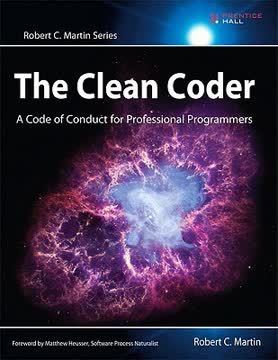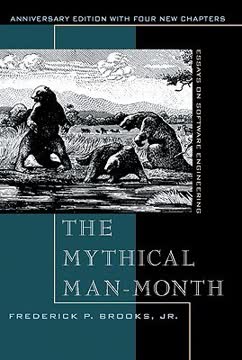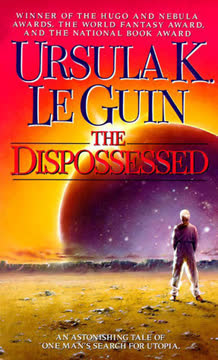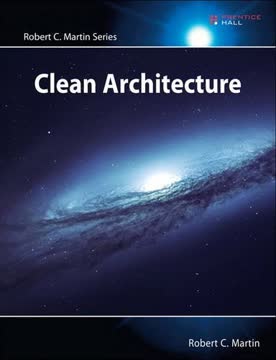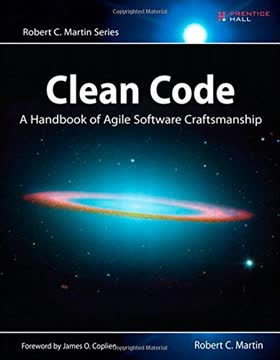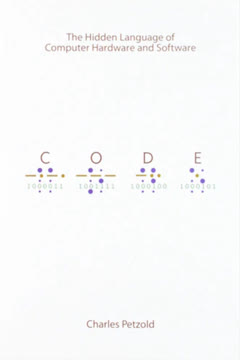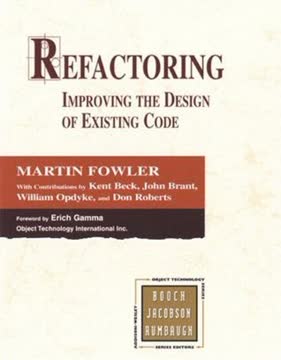نکات کلیدی
1. کد تمیز برای پروژههای نرمافزاری قابل نگهداری ضروری است
کد تمیز فقط یک ویژگی خوب یا لوکس در پروژههای نرمافزاری نیست. بلکه یک ضرورت است.
خوانایی کد اهمیت دارد. کد تمیز برای موفقیت بلندمدت هر پروژه نرمافزاری اساسی است. این مفهوم فراتر از قالببندی ساده است و شامل ساختار کلی، وضوح و قابلیت نگهداری کد میشود. جنبههای کلیدی کد تمیز شامل موارد زیر است:
- قالببندی و نامگذاری یکسان
- مستندسازی واضح و مختصر
- ساختار کد ماژولار و سازمانیافته
- حداقل تکرار کد (اصل DRY)
- سهولت درک و تغییر
ابزارهای کیفیت کد. برای حفظ کد تمیز، توسعهدهندگان باید از ابزارهای مختلف استفاده کنند:
- لینترها (مانند Pylint) برای بررسی سبک و خطا
- چککنندههای نوع (مانند Mypy) برای تحلیل نوع استاتیک
- قالببندهای کد (مانند Black) برای سبکدهی یکسان
- چارچوبهای تست خودکار برای اطمینان از صحت کد
2. کد پایتونیک از ویژگیهای خاص زبان برای کارایی بهره میبرد
کد پایتونیک به طور کلی کد با کیفیتتری است.
پذیرش اصطلاحات پایتون. نوشتن کد پایتونیک به معنای استفاده از ویژگیها و قراردادهای خاص زبان برای ایجاد کدی خواناتر، کارآمدتر و قابل نگهداریتر است. مفاهیم کلیدی پایتونیک شامل موارد زیر است:
- استفاده از لیست کامپرهنشن و جنریتور اکسپرشن
- مدیریت زمینه (با استفاده از with)
- استفاده صحیح از توابع و ساختارهای داده داخلی
- بهرهگیری از تایپ داک و طبیعت پویا پایتون
اجتناب از اشتباهات رایج. روشهای غیرپایتونیک که باید از آنها اجتناب کرد:
- استفاده از آرگومانهای پیشفرض قابل تغییر
- گسترش نادرست انواع داخلی
- استفاده بیش از حد از متغیرهای جهانی
- نادیده گرفتن ویژگیهای کتابخانه استاندارد پایتون
با رعایت اصول پایتونیک، توسعهدهندگان میتوانند کدی بنویسند که نه تنها کارآمدتر است بلکه با بهترین شیوههای جامعه پایتون نیز همسو است.
3. اصول طراحی انعطافپذیری و قابلیت گسترش در نرمافزار را ترویج میدهند
ایده معکوس کردن وابستگیها این است که کد ما نباید به جزئیات یا پیادهسازیهای خاص تطبیق یابد، بلکه برعکس.
جداسازی نگرانیها. طراحی خوب نرمافزار بر چندین اصل کلیدی تکیه دارد که ماژولاریت، انعطافپذیری و قابلیت نگهداری را ترویج میدهند:
- اصل مسئولیت واحد (SRP): هر جزء باید یک دلیل برای تغییر داشته باشد
- اصل باز/بسته (OCP): باز برای گسترش، بسته برای تغییر
- اصل معکوس کردن وابستگی (DIP): وابستگی به انتزاعات، نه به جزئیات
طراحی برای تغییر. اجرای این اصول منجر به:
- نگهداری و بهروزرسانی آسانتر کد
- بهبود قابلیت تست و اشکالزدایی
- افزایش قابلیت استفاده مجدد از کد
- کاهش اثرات زنجیرهای هنگام ایجاد تغییرات
با رعایت این اصول طراحی، توسعهدهندگان میتوانند نرمافزاری ایجاد کنند که در برابر تغییرات مقاومتر و در طول زمان آسانتر قابل گسترش باشد.
4. اصول SOLID راهنمای طراحی شیگرا قوی هستند
اصول SOLID راهنماییهای کلیدی برای طراحی نرمافزار شیگرا خوب هستند.
تجزیه و تحلیل SOLID. اصول SOLID چارچوبی برای ایجاد سیستمهای شیگرا قابل نگهداری و مقیاسپذیر ارائه میدهند:
- اصل مسئولیت واحد (SRP)
- اصل باز/بسته (OCP)
- اصل جایگزینی لیسکوف (LSP)
- اصل جداسازی رابط (ISP)
- اصل معکوس کردن وابستگی (DIP)
مزایای SOLID. اعمال این اصول منجر به:
- کد ماژولارتر و با اتصال کمتر
- تست و نگهداری آسانتر
- بهبود قابلیت استفاده مجدد از کد
- سازگاری بهتر با تغییرات نیازمندیها
در حالی که این اصول در زمینههای تایپ استاتیک منشأ گرفتهاند، میتوان آنها را به طور مؤثر در محیط پویا پایتون تطبیق و اعمال کرد، که منجر به طراحیهای شیگرا قویتر و انعطافپذیرتر میشود.
5. دکوراتورها قابلیت استفاده مجدد از کد و جداسازی نگرانیها را افزایش میدهند
دکوراتورها ابزارهای قدرتمندی در پایتون هستند که میتوانند به بسیاری از چیزها مانند کلاسها، متدها، توابع، جنریتورها و بسیاری دیگر اعمال شوند.
تقویت کد چندمنظوره. دکوراتورها راهی تمیز برای تغییر یا گسترش رفتار توابع، متدها یا کلاسها بدون تغییر کد منبع آنها ارائه میدهند. استفادههای رایج شامل:
- افزودن قابلیت لاگگیری یا زمانبندی
- پیادهسازی کش یا یادآوری
- مدیریت کنترل دسترسی یا احراز هویت
- تغییر آرگومانها یا مقادیر بازگشتی توابع
بهترین شیوهها. هنگام کار با دکوراتورها:
- از functools.wraps برای حفظ متادیتای توابع دکور شده استفاده کنید
- دکوراتورهایی ایجاد کنید که بتوانند با هر دو توابع و متدها کار کنند
- از اثرات جانبی در بدنه دکوراتور اجتناب کنید
- از دکوراتورهای مبتنی بر کلاس برای سناریوهای پیچیدهتر استفاده کنید
دکوراتورها فلسفه "باتریها شامل" پایتون را به نمایش میگذارند و ابزاری قدرتمند برای استفاده مجدد از کد و جداسازی نگرانیها ارائه میدهند.
6. توصیفگرها مدیریت قدرتمند ویژگیها را در پایتون فراهم میکنند
توصیفگرها یکی دیگر از ویژگیهای متمایز پایتون هستند که برنامهنویسی شیگرا را به سطح دیگری میبرند.
کنترل پیشرفته ویژگیها. توصیفگرها امکان کنترل دقیق بر دسترسی، تغییر و حذف ویژگیها در اشیاء پایتون را فراهم میکنند. آنها به ویژه برای:
- پیادهسازی ویژگیهای محاسبهشده یا مدیریتشده
- اعمال بررسی نوع یا اعتبارسنجی
- ایجاد رفتار ویژگی قابل استفاده مجدد در چندین کلاس
انواع توصیفگرها:
- توصیفگرهای داده: پیادهسازی set و/یا delete
- توصیفگرهای غیر داده: فقط پیادهسازی get
توصیفگرها مکانیزم زیرین بسیاری از ویژگیهای پایتون، از جمله ویژگیها، متدها و متدهای کلاس هستند. درک و استفاده از توصیفگرها میتواند به طراحیهای شیگرا زیباتر و قدرتمندتر در پایتون منجر شود.
7. جنریتورها و کوروتینها پردازش داده کارآمد و برنامهنویسی غیرهمزمان را ممکن میسازند
جنریتورها احتمالاً بهترین ویژگی پایتون هستند.
تکرار حافظهکارآمد. جنریتورها راهی برای ایجاد تکرارگرهایی فراهم میکنند که مقادیر را به صورت درخواستی تولید میکنند، به جای اینکه همه آنها را در حافظه ذخیره کنند. مزایا شامل:
- کاهش استفاده از حافظه برای مجموعه دادههای بزرگ
- بهبود عملکرد برای پردازش توالیها
- سادهسازی کد برای تکرارهای پیچیده
برنامهنویسی غیرهمزمان. کوروتینها، بر اساس جنریتورها، امکانپذیر میسازند:
- عملیات I/O غیرمسدودکننده
- برنامهنویسی همزمان بدون نخها
- مدیریت کارآمد بسیاری از عملیات همزمان
مفاهیم کلیدی:
- عبارات yield و yield from
- نحو async و await (برای کوروتینهای مدرن)
- حلقههای رویداد و چارچوبهای غیرهمزمان (مانند asyncio)
تسلط بر جنریتورها و کوروتینها به توسعهدهندگان اجازه میدهد تا برنامههای پایتون کارآمدتر و مقیاسپذیرتری بنویسند، به ویژه برای وظایف I/O و پردازش داده.
8. تست واحد کیفیت کد را تضمین میکند و بازسازی را تسهیل میکند
تستهای واحد (و هر نوع تست خودکار، در این مورد) برای نگهداری نرمافزار حیاتی هستند.
تضمین کیفیت. تستهای واحد مزایای متعددی برای توسعه نرمافزار فراهم میکنند:
- شناسایی و پیشگیری از باگها در مراحل اولیه
- مستندسازی رفتار مورد انتظار
- اطمینان در تغییرات کد و بازسازی
- بهبود طراحی از طریق ملاحظات تستپذیری
بهترین شیوههای تست:
- نوشتن تستها قبل یا همزمان با کد (توسعه مبتنی بر تست)
- هدفگذاری برای پوشش کد بالا، اما تمرکز بر مسیرهای بحرانی
- استفاده از ماکینگ برای جداسازی واحدهای کد
- اجرای منظم و نگهداری مجموعه تست
چارچوبهای تست محبوب پایتون:
- unittest (داخلی)
- pytest (شخص ثالث، با ویژگیهای پیشرفته)
گنجاندن تست واحد در فرآیند توسعه منجر به کدی با کیفیت بالاتر، قابل نگهداریتر و افزایش اطمینان در قابلیت اطمینان نرمافزار میشود.
9. الگوهای طراحی راهحلهای قابل استفاده مجدد برای مشکلات رایج نرمافزاری ارائه میدهند
الگوهای طراحی راهنماییهای کلیدی برای طراحی نرمافزار شیگرا خوب هستند.
راهحلهای اثباتشده. الگوهای طراحی بهترین شیوهها برای حل مشکلات رایج طراحی نرمافزار را نشان میدهند. آنها ارائه میدهند:
- یک واژگان مشترک برای توسعهدهندگان
- راهحلهای طراحی آزمایششده و اثباتشده
- بهبود انعطافپذیری و قابلیت نگهداری کد
دستهبندی الگوها:
- الگوهای ساختاری (مانند Factory، Singleton)
- الگوهای ساختاری (مانند Adapter، Decorator)
- الگوهای رفتاری (مانند Observer، Strategy)
ملاحظات خاص پایتون. در حالی که بسیاری از الگوهای طراحی زبانمحور نیستند، طبیعت پویا و ویژگیهای داخلی پایتون میتوانند نیاز به برخی از الگوهای سنتی را ساده یا حتی از بین ببرند. برای مثال:
- تایپ داک پایتون میتواند جایگزین سلسلهمراتب پیچیده ارثبری شود
- توابع درجه اول میتوانند الگوهای استراتژی و فرمان را ساده کنند
- مدیران زمینه جایگزین پایتونیک برای برخی از الگوهای ساختاری ارائه میدهند
هنگام اعمال الگوهای طراحی در پایتون، مهم است که ویژگیهای منحصر به فرد زبان و شیوههای اصطلاحی را در نظر بگیرید تا کدی تمیز، کارآمد و واقعاً پایتونیک ایجاد کنید.
آخرین بهروزرسانی::
FAQ
1. What’s Clean Code in Python by Mariano Anaya about?
- Bridges theory and practice: The book connects general software engineering principles with Python-specific idioms, focusing on writing maintainable, readable, and robust code.
- Comprehensive Python coverage: It explores advanced Python features like decorators, descriptors, generators, and asynchronous programming, showing how to use them for better design.
- Emphasis on clean design: The book stresses that clean code is about clear communication and maintainability, not just formatting or style.
- Target audience: Suitable for Python programmers at all levels, assuming some familiarity with object-oriented design and Python syntax.
2. Why should I read Clean Code in Python by Mariano Anaya?
- Improve code maintainability: The book explains how clean code helps teams avoid technical debt and deliver features predictably.
- Master Pythonic idioms: Readers learn about Python-specific features, idioms, and advanced topics essential for writing efficient, idiomatic code.
- Apply solid design principles: It teaches how to implement SOLID principles, design by contract, and defensive programming in Python projects.
- Understand architecture and testing: The book covers clean architecture, packaging, deployment, and the importance of unit testing and refactoring.
3. What are the key takeaways from Clean Code in Python by Mariano Anaya?
- Clean code is communication: Code should be written for humans, making ideas clear and maintainable for other developers.
- Beyond formatting: While style guides like PEP-8 are important, true clean code involves robust, readable, and maintainable design.
- Leverage Python’s strengths: Use features like magic methods, context managers, and descriptors to write idiomatic and reusable code.
- Testing and refactoring: Unit testing, code coverage, and refactoring are essential for evolving and maintaining high-quality codebases.
4. What are the best quotes from Clean Code in Python by Mariano Anaya and what do they mean?
- On descriptors: "Descriptors are a more advanced feature in Python that push the boundaries, closer to metaprogramming... They are, in this sense, the most interesting type of attribute a class can have." This highlights the power and flexibility of descriptors for advanced attribute management.
- On testing: "Unit tests often act as a mirror for the code—when the code is easy to test, it's clear and correctly designed, and this will be reflected in the unit tests." This emphasizes the relationship between code quality and testability.
- On design patterns: "Design patterns are not invented but discovered... The best designs are those in which design patterns are completely transparent to the users." This suggests that patterns should emerge naturally and not clutter code.
- On architecture: "All these ideas are interconnected... The architecture also has to express the intent of the problem it is trying to solve." This underlines the importance of intention-revealing architecture.
- On pragmatism: "They are just principles, not laws... practicality beats purity." This encourages practical application over rigid adherence to principles.
5. How does Clean Code in Python by Mariano Anaya define and emphasize the importance of clean code?
- Clean code as communication: The book asserts that code is a medium for developers to communicate ideas, not just instructions for machines.
- Maintainability is crucial: Clean code prevents the accumulation of technical debt, enabling teams to deliver features steadily and predictably.
- Goes beyond style guides: While PEP-8 and formatting are necessary, clean code is fundamentally about clarity, robustness, and ease of maintenance.
- Human judgment matters: Clean code is ultimately judged by other developers, not by automated tools.
6. What Python-specific idioms and features does Mariano Anaya recommend for writing clean, idiomatic code?
- Magic methods and protocols: Implementing methods like
__getitem__,__iter__,__enter__, and__exit__allows custom objects to behave like built-in types. - Context managers: Using
withstatements and context management methods ensures safe and clean resource handling. - Avoid common pitfalls: The book warns against mutable default arguments, improper inheritance, and misuse of underscores, promoting best practices.
- Leverage advanced features: Decorators, descriptors, and generators are highlighted for their role in writing concise, reusable, and efficient code.
7. How does Clean Code in Python by Mariano Anaya recommend handling code formatting and documentation?
- Follow PEP-8: Adhering to Python’s style guide ensures consistency, readability, and easier error detection.
- Use docstrings over comments: Docstrings provide embedded documentation, explaining what code does, while comments are discouraged as they can become outdated.
- Type hinting and annotations: Python’s type annotations (PEP-3107, PEP-484) help document expected types and enable static analysis tools.
- Documentation complements code: Docstrings and annotations together improve code understandability and maintainability.
8. What are descriptors in Python and how does Mariano Anaya explain their use in Clean Code in Python?
- Definition and protocol: Descriptors are objects implementing at least one of
__get__,__set__, or__delete__, controlling attribute access. - Data vs. non-data descriptors: Data descriptors (with
__set__or__delete__) override instance attributes, while non-data descriptors (only__get__) do not. - Practical applications: Descriptors are used for reusable abstractions like validation fields, attribute tracing, and API transformations.
- Best for libraries/frameworks: The book suggests using descriptors mainly in library or framework code, not typical business logic.
9. How does Clean Code in Python by Mariano Anaya explain and recommend the use of decorators?
- Definition and syntax: Decorators are functions or classes that modify or enhance other functions or classes, using the
@syntax for wrapping. - Use cases: They promote code reuse, separation of concerns, parameter transformation, tracing, and validation.
- Best practices: Use
functools.wrapsto preserve metadata, avoid side effects, and keep decorators focused on a single responsibility. - When to use: Apply decorators when reuse is significant, typically when the same logic is needed in three or more places.
10. What are generators and coroutines in Python, and how does Mariano Anaya recommend using them in Clean Code in Python?
- Generators for efficiency: Generators yield items one at a time, enabling memory-efficient processing of large datasets.
- Generator expressions: These provide concise alternatives to list comprehensions and support idiomatic iteration patterns.
- Coroutines and async programming: Generators evolved into coroutines, supporting asynchronous programming with methods like
send(),throw(), andclose(). - Delegation with
yield from: Theyield fromsyntax allows delegation to sub-generators, simplifying complex iteration logic.
11. What are the SOLID principles and how does Mariano Anaya suggest applying them in Python?
- Single Responsibility Principle (SRP): Classes should encapsulate a single responsibility, improving cohesion and maintainability.
- Open/Closed Principle (OCP): Design software to be open for extension but closed for modification, using abstractions and polymorphism.
- Liskov Substitution Principle (LSP): Subtypes must be substitutable for their base types, ensuring consistent interfaces and contracts.
- Interface Segregation and Dependency Inversion: Keep interfaces small and specific, and invert dependencies so high-level modules depend on abstractions, not low-level details.
12. How does Clean Code in Python by Mariano Anaya approach unit testing, refactoring, and handling external dependencies?
- Unit testing as assurance: Unit tests provide formal proof that code works as intended and enable safe refactoring.
- Testing frameworks: The book compares
unittestandpytest, covering fixtures, parameterization, and mocking external dependencies. - Advanced testing: It introduces property-based testing with
hypothesisand mutation testing for thoroughness. - Mocking and design: Use mocks to isolate tests from external systems, and prefer dependency injection and adapters over excessive monkey-patching for maintainability.
نقد و بررسی
کتاب کد تمیز در پایتون عمدتاً نقدهای مثبتی دریافت کرده است و میانگین امتیاز 4.13 از 5 را کسب کرده است. خوانندگان از پوشش اصول کدنویسی تمیز، شیوههای پایتونیک و مباحث پیشرفتهای مانند دکوراتورها و الگوهای طراحی قدردانی میکنند. بسیاری از افراد این کتاب را برای بهبود مهارتهای برنامهنویسی شیءگرا و کیفیت کد ارزشمند میدانند. برخی از خوانندگان به عمق و مثالهای عملی کتاب اشاره میکنند، در حالی که عدهای سبک نگارش و کمبود تأکید بر برخی موضوعات را نقد میکنند. بهطور کلی، این کتاب برای توسعهدهندگان پایتون در سطح متوسط تا پیشرفته که به دنبال بهبود شیوههای کدنویسی و تعمیق درک خود از زبان هستند، توصیه میشود.
Similar Books
